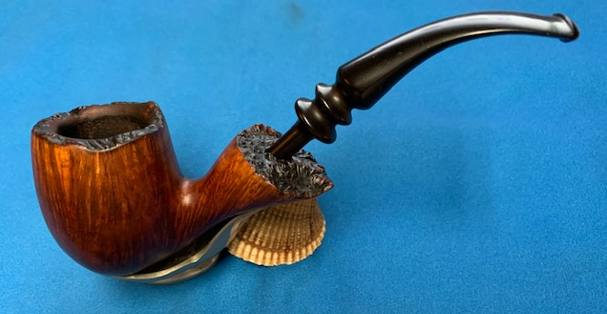Blog by Steve Laug
The next pipe on the table came to us late in 2019 from a fellow in Los Angeles, California, USA. We have purchased quite a few pipe from him over the years and several Ben Wade Pipe. This is another one of those. Even though the finish was dull and lifeless it showed promise under the grit and grime of the years. On the underside of the shank it was clearly stamped Ben Wade in script [over] Danish[over] Hand Model[over] 100 [over] Made In Denmark. The finish is filthy with grime and oils ground into the smooth briar of the bowl and shank sides. The bowl had a thick cake that overflowed in heavy lava onto the plateau rim top filling in the grooves and valleys of the finish. The plateau shank end was also dirty with dust and debris in the grooves and valleys of the shank. The vulcanite stem was oxidized, calcified, dirty and had some tooth marks and chatter on both sides ahead of the button. Jeff took some photos of the pipe to show its overall condition before he started his cleanup work. 
 He took photos of the rim top and bowl to give a clear picture of the thickness of the cake and the lava on the plateau finish of the rim top. There is dust and debris stuck to the walls of the bowl clearly visible in the photos. He also took photos of the top and underside of the stem to show the chatter and tooth marks.
He took photos of the rim top and bowl to give a clear picture of the thickness of the cake and the lava on the plateau finish of the rim top. There is dust and debris stuck to the walls of the bowl clearly visible in the photos. He also took photos of the top and underside of the stem to show the chatter and tooth marks. 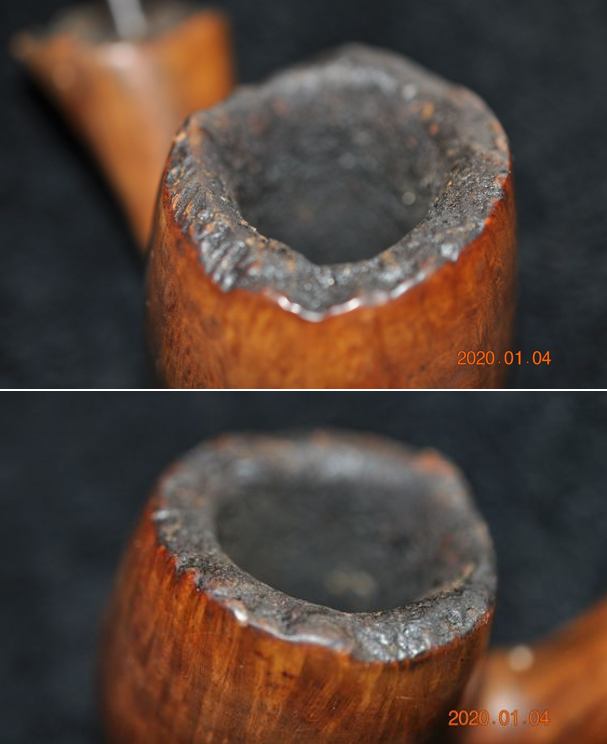
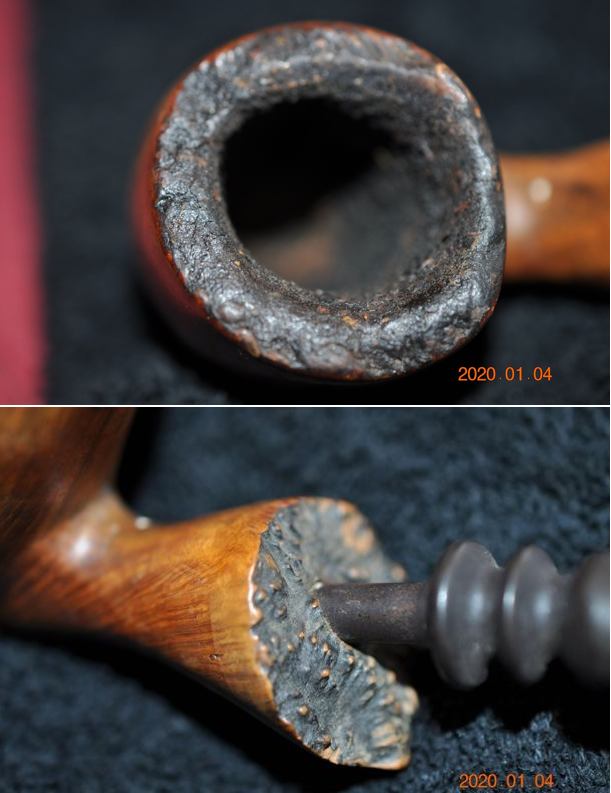
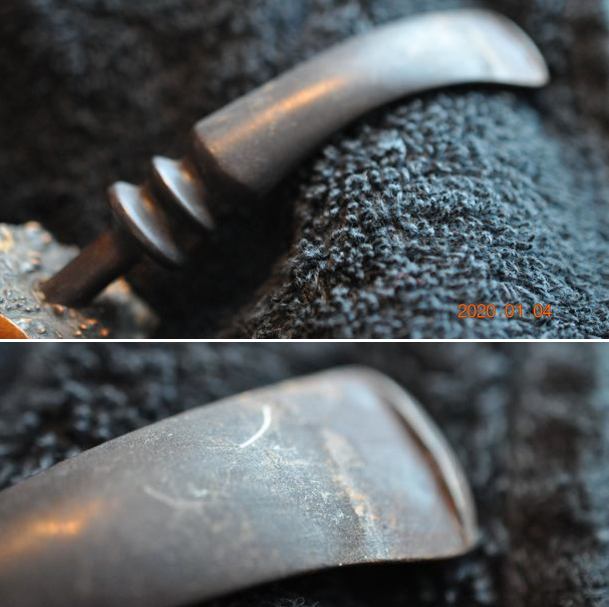
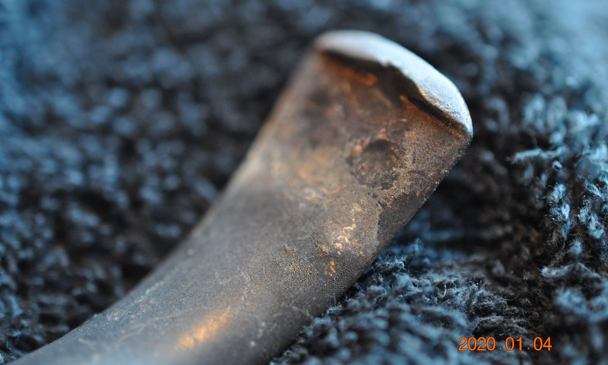 Jeff took photos of the sides and heel of the bowl to give a picture of what the briar around the pipe looked like. There is some stunning grain under the grime.
Jeff took photos of the sides and heel of the bowl to give a picture of what the briar around the pipe looked like. There is some stunning grain under the grime. 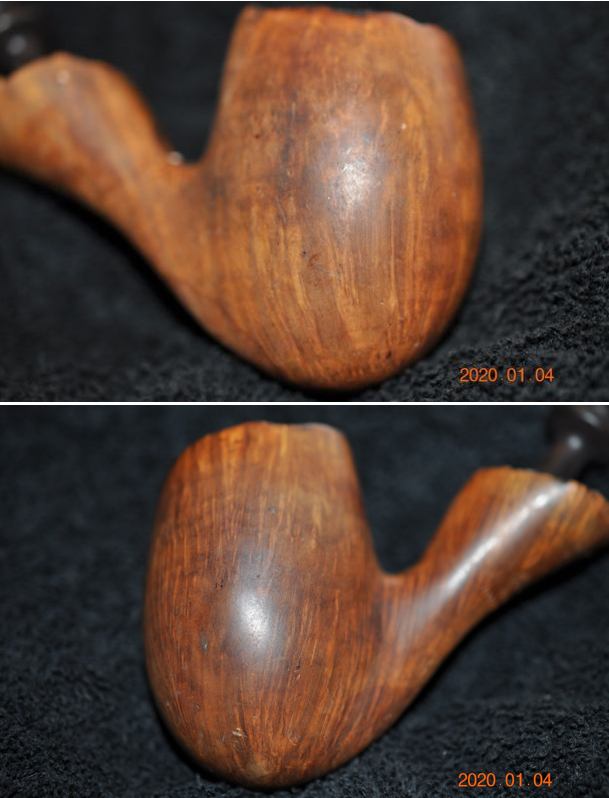
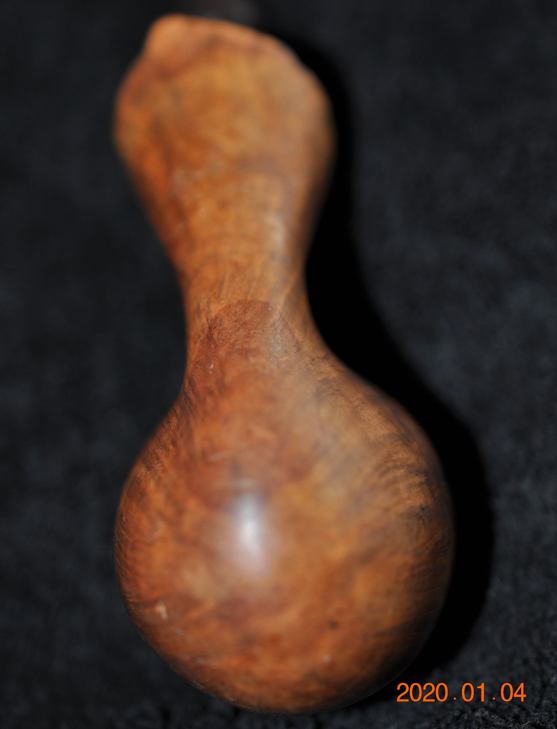 He took photos of the stamping on the shank. It reads as noted above and is clear and readable. There is the faint remnant of the crown stamp on the top of the stem.
He took photos of the stamping on the shank. It reads as noted above and is clear and readable. There is the faint remnant of the crown stamp on the top of the stem. 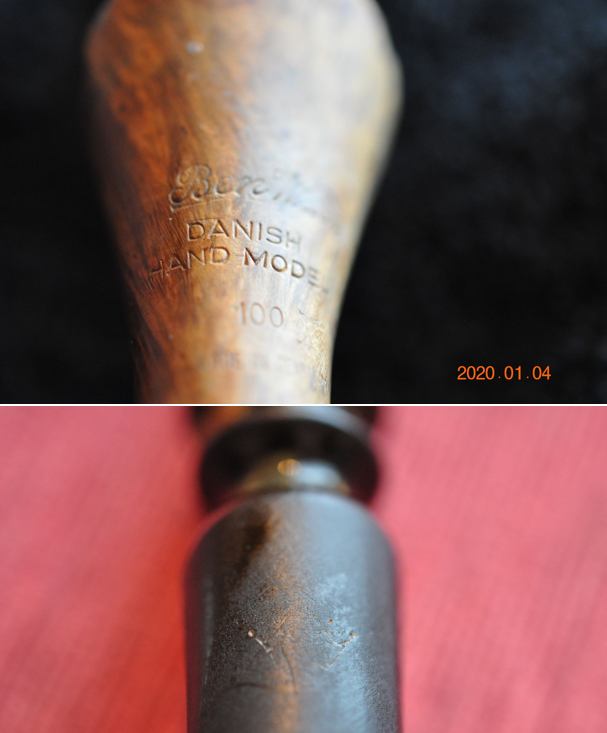 I remembered a bit of history on the brand that thought that the Preben Holm pipes were marketed under the Ben Wade label in the US and imported through Lane Ltd. I turned to Pipedia and read the listing on the brand to refresh my memory and flesh out the knowledge of the brand (https://pipedia.org/wiki/Ben_Wade). I have included a photo from that site that was taken from a Tinderbox advertisement.
I remembered a bit of history on the brand that thought that the Preben Holm pipes were marketed under the Ben Wade label in the US and imported through Lane Ltd. I turned to Pipedia and read the listing on the brand to refresh my memory and flesh out the knowledge of the brand (https://pipedia.org/wiki/Ben_Wade). I have included a photo from that site that was taken from a Tinderbox advertisement. I quote the portion of the article that summarizes the Danish period of the history of the brand:
I quote the portion of the article that summarizes the Danish period of the history of the brand:
Young Copenhagen master pipemaker Preben Holm had made a meteoric career heading a pipe manufacture employing 45 people at the age of 22! But around the turn of 1970/71 he was in major financial difficulties. His US distributor, Snug Harbour Ltd. in New York City, left him in the lurch. Holm had three unpaid invoices on his desk and another large shipment was ready for the USA, when Snug Harbour’s manager told him on the phone that there was no money at all on the account to pay him.
So the Dane went to New York for an almost desperate search for a new distribution partner. He made contacts with Lane Ltd. and met Herman G. Lane in February 1971. Lane Ltd. had no interest in Holm’s serial pipes produced at that time but so much the more in the hand-carved freehands because the hype for Danish freehands and fancies in the States was still on its way to the climax then. The meeting resulted in an agreement to start a cooperation. Lane insisted to improve the quality considerably and in return he assured to be able to sell essentially larger quantities.
Holm went back home to work on new samples with all-new designs and altered finishes for Lane. Both, Lane and Holm, agreed that it would be unwise to sell the pipes under Preben Holm’s name as long as Snug Harbour had a considerable stock of Preben Holm pipes and might sell them pipes at very low prices just to bring in some money.
So on Mr. Lane’s proposal it was determined to use the name Ben Wade belonging to Lane Ltd. Lane spent considerable amounts of money for advertising the new brand in the big magazines– the centerpiece being whole-page ads showing a very exclusive Seven Day’s Set.
The cooperation with Lane Ltd. proved to be an eminent business success for both partners. Within a very short time Ben Wade Handmade Denmark sold in much larger quantities and at higher prices than they had ever dreamed of. And the hype these freehands and fancy pipes caused went on unbroken long after Herman G. Lane deceased. Preben Holm – obviously much more brilliant in pipe making than in pipe business – was in major troubles again in 1986 and had to sack most of his staff. The Ben Wade production was significantly lowered but continued until his untimely death in June of 1989.
Up to now Preben Holm made Ben Wade pipes are cult and highly sought for on the estate markets.
With that information my initial thoughts were confirmed. This pipe was a Preben Holm made Freehand distributed in the US by Lane Ltd under the name Ben Wade. The freehand rage occurred in the late 70s and the pipes were made until Preben’s death in 1989. My guess would be that this pipe was made sometime during that time period and potentially in the late 70s.
Jeff had cleaned up the pipe until it almost did not look like the same pipe. He reamed the pipe with a PipNet Pipe Reamer and cleaned up the remnants with a Savinelli Fitsall Pipe Knife. He scrubbed the exterior of the bowl with undiluted Murphy’s Oil Soap with a tooth brush. He was able to get all of the lava and grime off the rim top and shank end. He rinsed it under running warm water to remove the soap and debris. He cleaned out the inside of the shank and the airway in the stem with alcohol, cotton swabs and pipe cleaners. He scrubbed the stem with Soft Scrub and cotton pads to remove the debris and oils on the stem. He soaked it in Before & After Pipe Stem Deoxidizer. He rinsed it with warm water and dried it off. I took photos of the pipe once I received it. 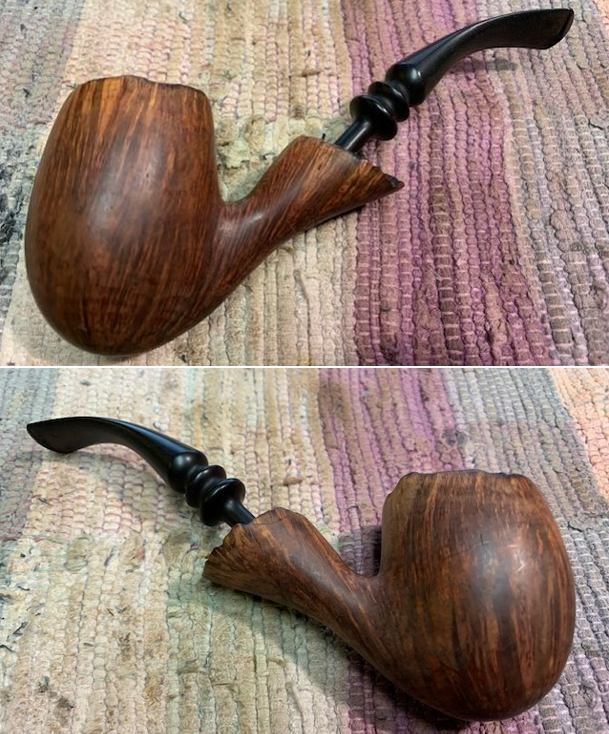
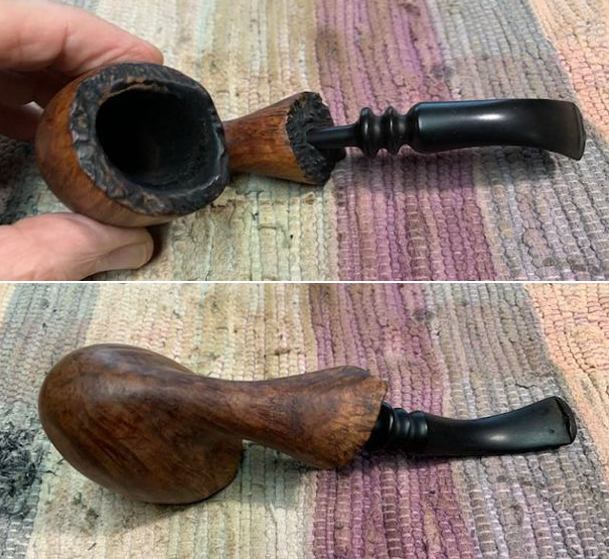 The rim top had some darkening on the back of the bowl. The beveled inner edge of the rim looked good with some darkening. The rim thinned toward the back of the bowl but was still quite thick. The stem surface looked very good with a few small tooth marks and chatter on both sides near the button.
The rim top had some darkening on the back of the bowl. The beveled inner edge of the rim looked good with some darkening. The rim thinned toward the back of the bowl but was still quite thick. The stem surface looked very good with a few small tooth marks and chatter on both sides near the button. 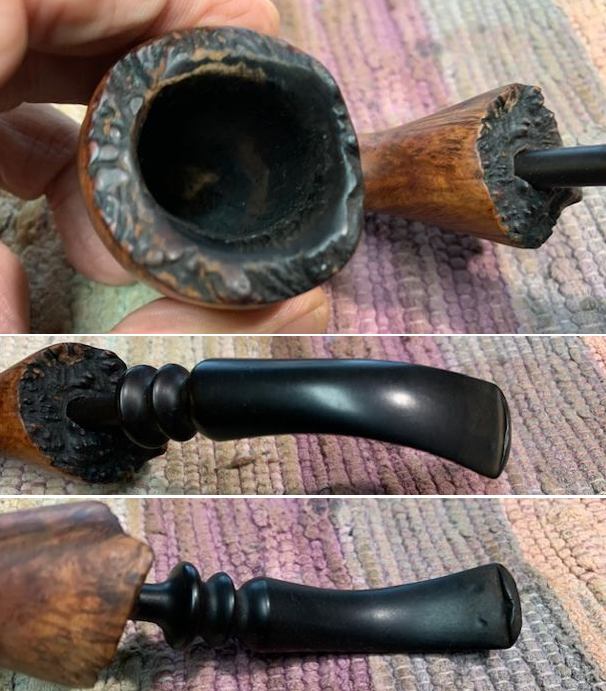 I took a photo of the stamping on the underside of the shank. It is clearer than it appears in the photo and is readable as noted above.
I took a photo of the stamping on the underside of the shank. It is clearer than it appears in the photo and is readable as noted above.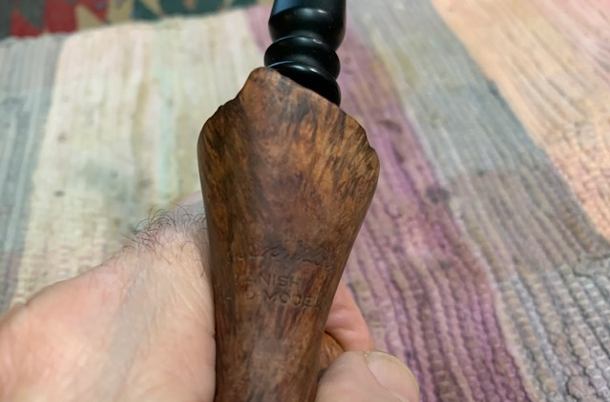 I removed the stem and took a photo of the pipe to give a sense of the whole. The stem is turned fancy vulcanite.
I removed the stem and took a photo of the pipe to give a sense of the whole. The stem is turned fancy vulcanite. 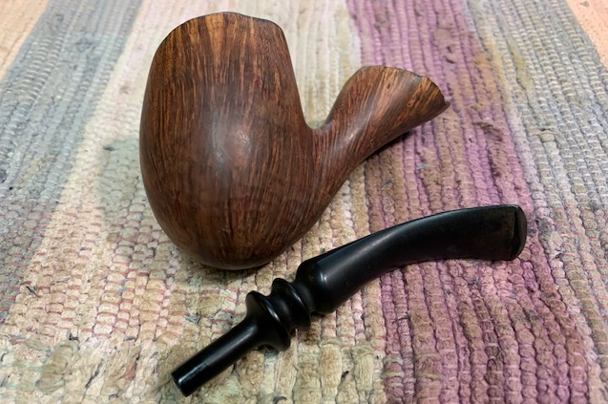 I started my work on the pipe by polishing the bowl sides and shank with micromesh sanding pads – dry sanding with 1500-12000 grit pads and wiping it down after each pad with a damp cloth.
I started my work on the pipe by polishing the bowl sides and shank with micromesh sanding pads – dry sanding with 1500-12000 grit pads and wiping it down after each pad with a damp cloth. 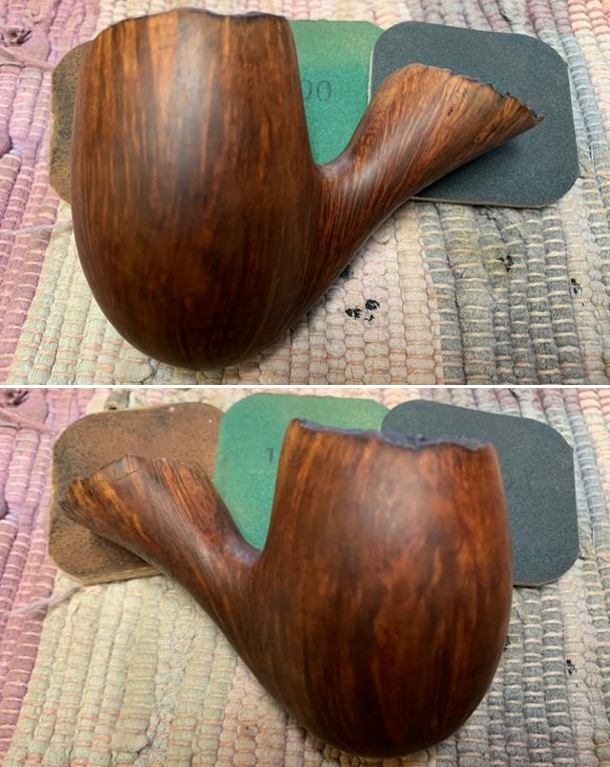
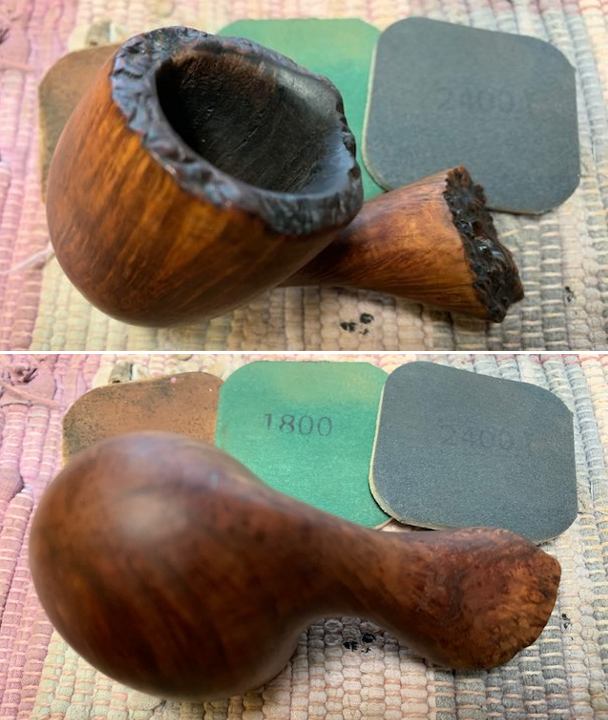
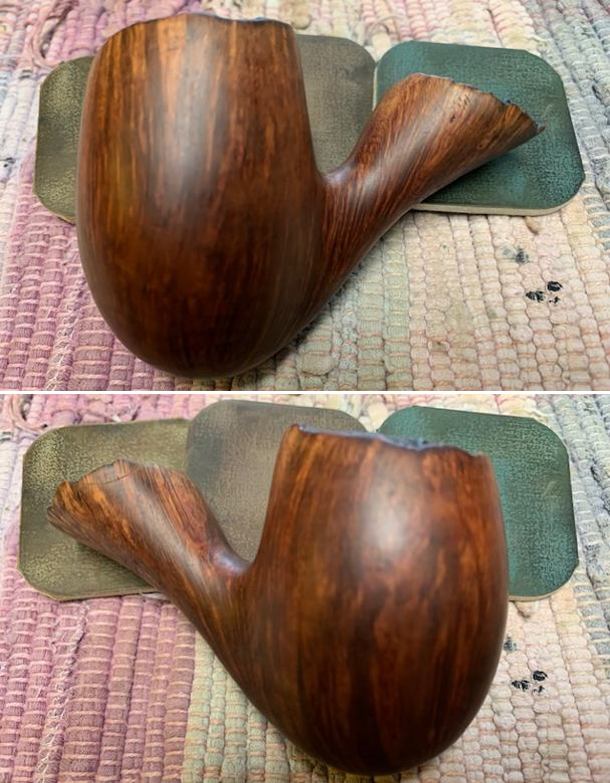
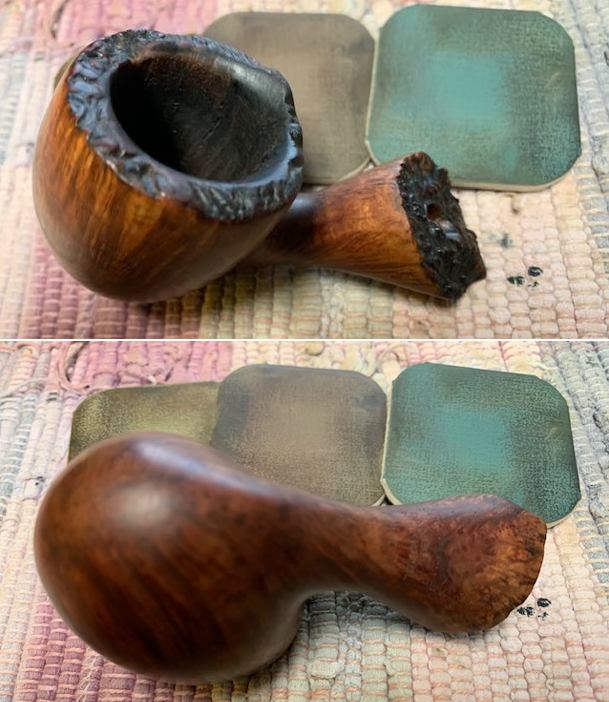
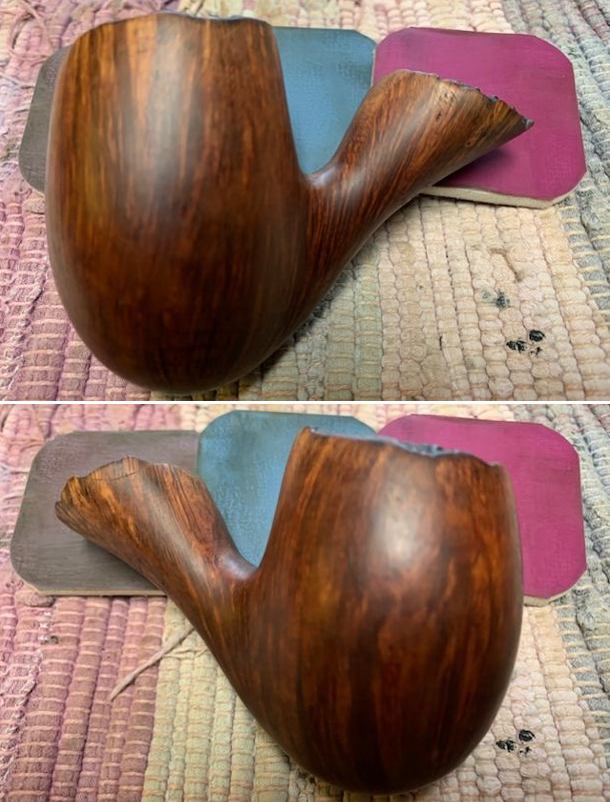
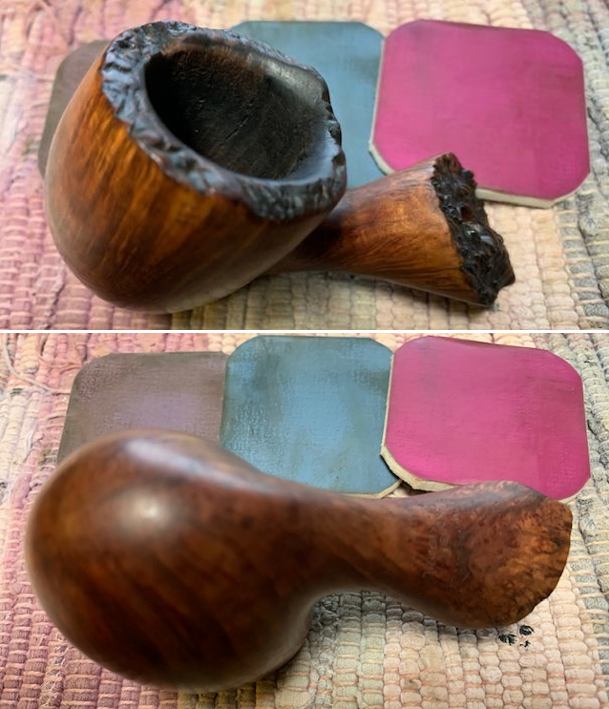 I paused in the polishing to clean up the darkening on the inner bevel of the plateau rim top with a folded piece of 220 grit sandpaper. I was able to minimize the darkening and I like the looks of the rim top.
I paused in the polishing to clean up the darkening on the inner bevel of the plateau rim top with a folded piece of 220 grit sandpaper. I was able to minimize the darkening and I like the looks of the rim top. 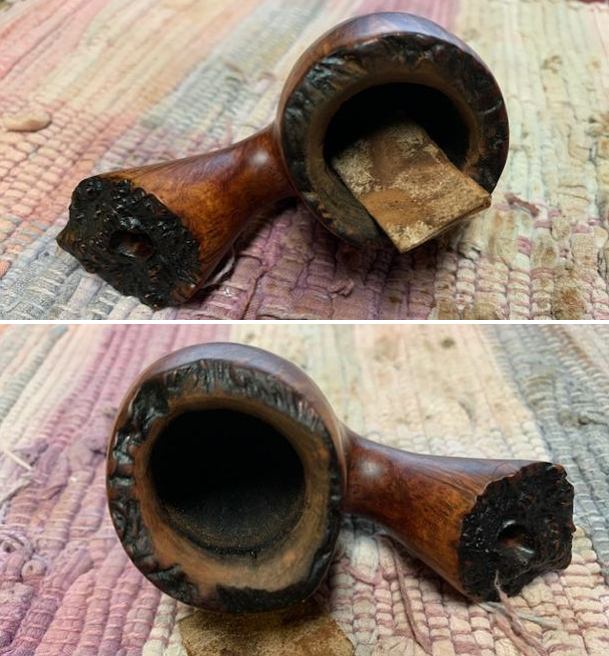 I rubbed the bowl and shank down with Before & After Restoration Balm. I worked it into the surface of the bowl sides and shank with my fingertips and into the plateau rim top with a horsehair shoe brush. The product works to clean, enliven and protect the briar. I let the balm sit for 10 minutes and then buffed with a cotton cloth to raise the shine.
I rubbed the bowl and shank down with Before & After Restoration Balm. I worked it into the surface of the bowl sides and shank with my fingertips and into the plateau rim top with a horsehair shoe brush. The product works to clean, enliven and protect the briar. I let the balm sit for 10 minutes and then buffed with a cotton cloth to raise the shine. 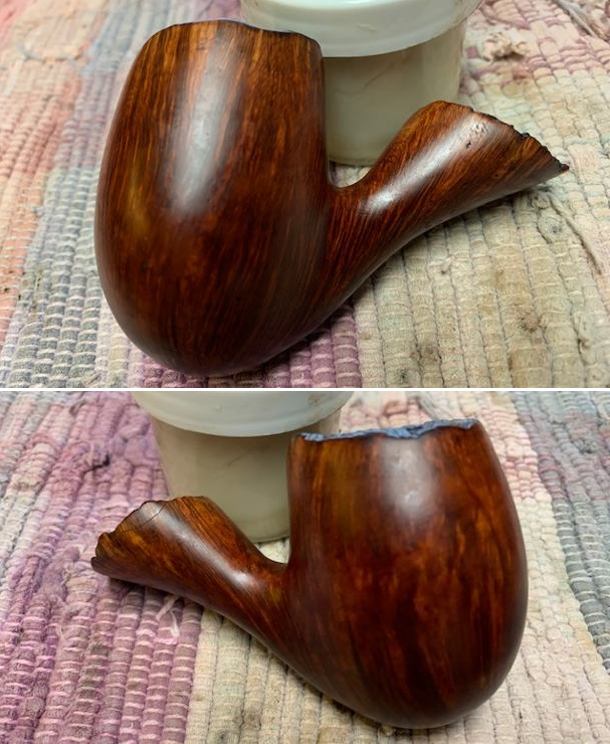
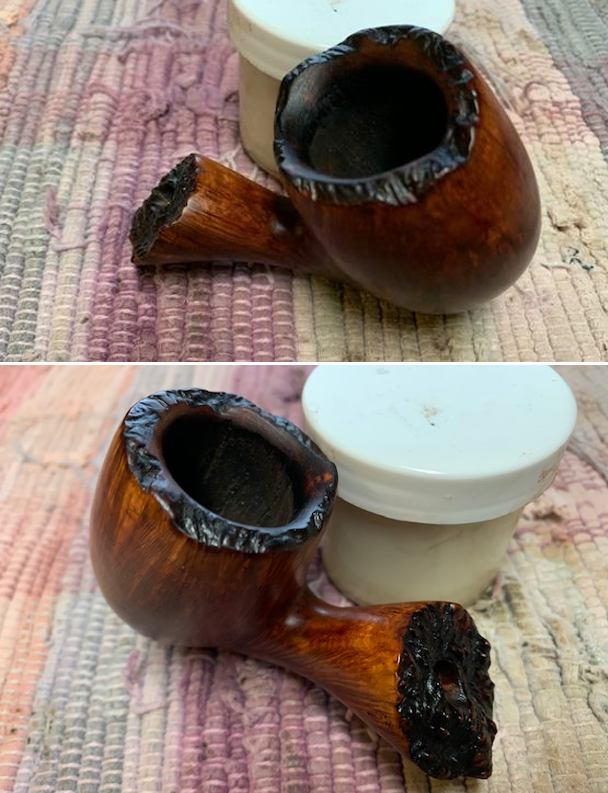
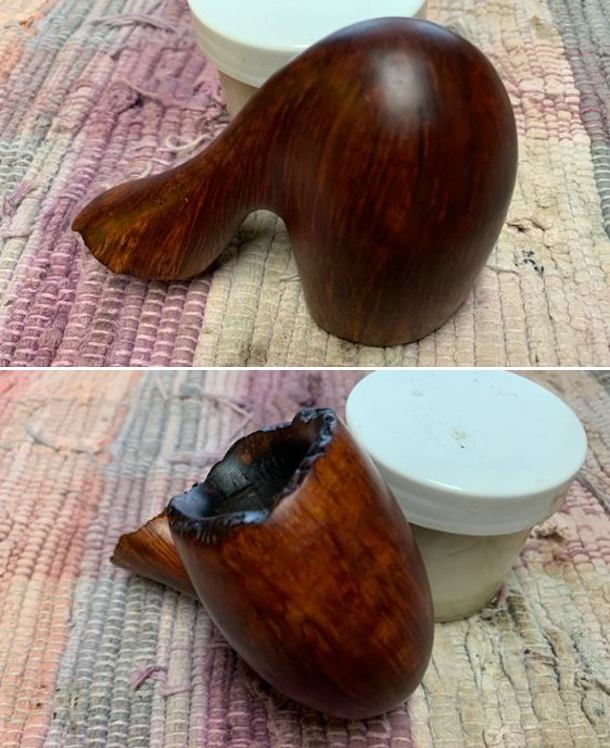 While I polished the shank I saw a small hairline crack on the right side of the shank at the plateau end. I have circled it in red in the photo below. I decided to pause in the work on the stem and address this issue first. I filled in the crack with a drizzle of CA glue. I let hardened then sanded the area with 220 grit sandpaper to smooth it out and then polished it with micromesh sanding pads. I stained it with an oak stain pen and then gave it a rub of Before & After Restoration Balm. I buffed it with a cotton cloth.
While I polished the shank I saw a small hairline crack on the right side of the shank at the plateau end. I have circled it in red in the photo below. I decided to pause in the work on the stem and address this issue first. I filled in the crack with a drizzle of CA glue. I let hardened then sanded the area with 220 grit sandpaper to smooth it out and then polished it with micromesh sanding pads. I stained it with an oak stain pen and then gave it a rub of Before & After Restoration Balm. I buffed it with a cotton cloth. 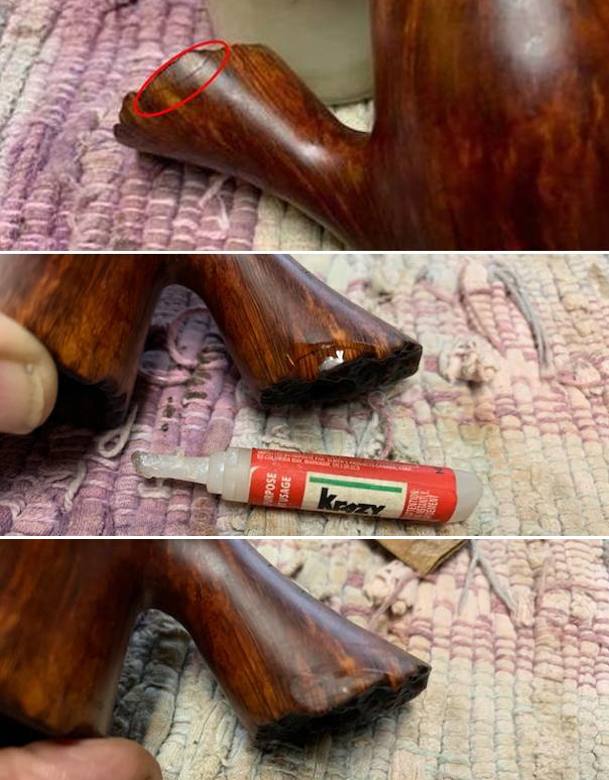
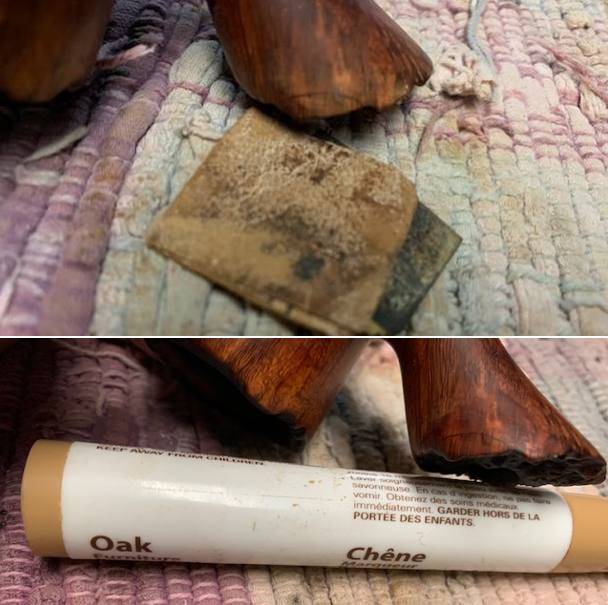 I set the bowl aside and turned to work on the stem. I painted the surface of the rim with the flame of Bic lighter to raise the tooth marks. I was able to raise them quite significantly but there were deeper ones that needed further work. I filled in what remained with clear CA glue and set the stem aside to cure.
I set the bowl aside and turned to work on the stem. I painted the surface of the rim with the flame of Bic lighter to raise the tooth marks. I was able to raise them quite significantly but there were deeper ones that needed further work. I filled in what remained with clear CA glue and set the stem aside to cure. 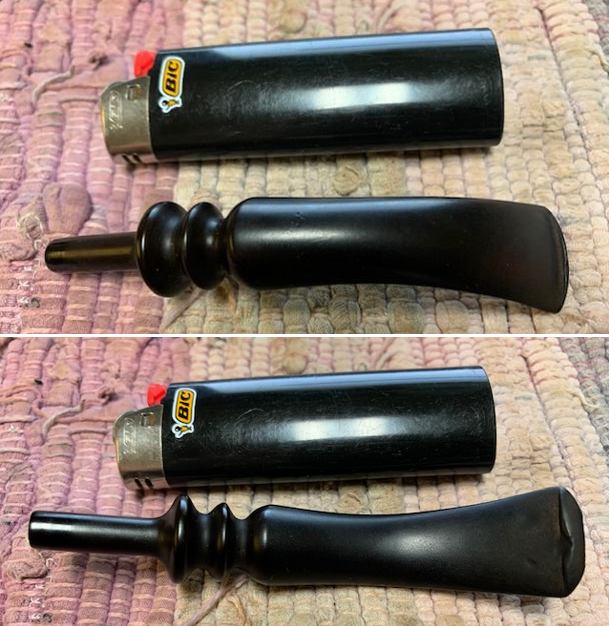
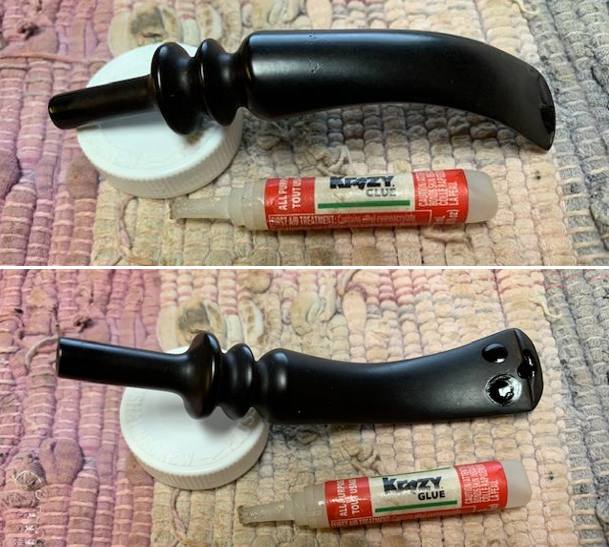 Once the glue cure I flattened out the repairs with a small flat file. I sanded them with 220 grit sandpaper to blend them into the stem surface. I started the polishing of the stem with 400 grit wet dry sandpaper. (I failed to take a photo of the sanding process but you can see the result in the polishing photos.)
Once the glue cure I flattened out the repairs with a small flat file. I sanded them with 220 grit sandpaper to blend them into the stem surface. I started the polishing of the stem with 400 grit wet dry sandpaper. (I failed to take a photo of the sanding process but you can see the result in the polishing photos.) 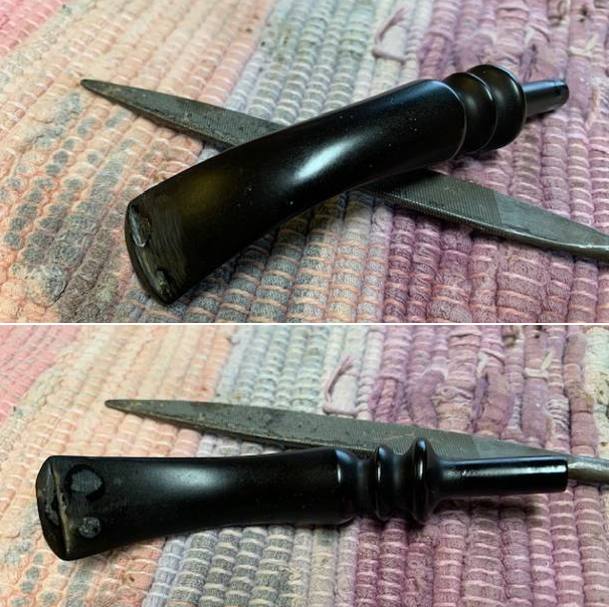 I polished the vulcanite stem with micromesh sanding pads – 1500-12000 grit pads. I wiped it down with Obsidian Oil after each sanding pad. I used Before & After Pipe Polish – both Fine and Extra Fine to further polish the stem. I gave it a final rubdown with Obsidian Oil to further protect it and let it dry.
I polished the vulcanite stem with micromesh sanding pads – 1500-12000 grit pads. I wiped it down with Obsidian Oil after each sanding pad. I used Before & After Pipe Polish – both Fine and Extra Fine to further polish the stem. I gave it a final rubdown with Obsidian Oil to further protect it and let it dry. 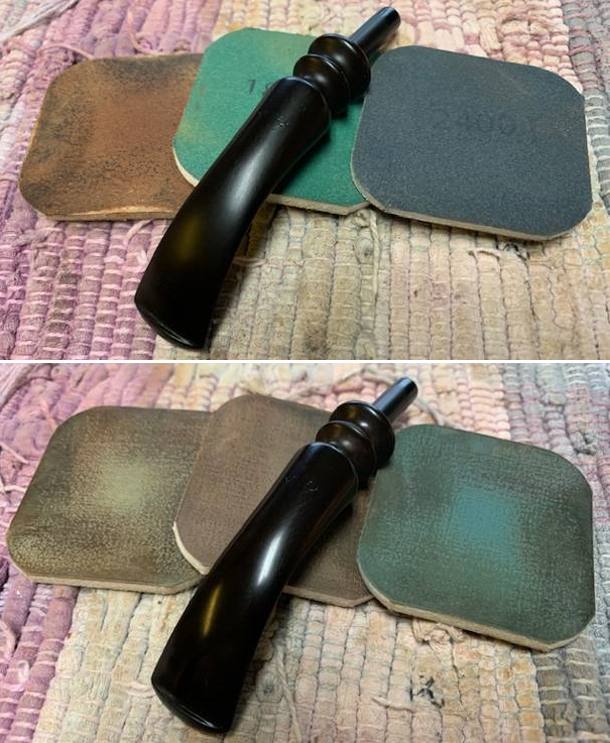
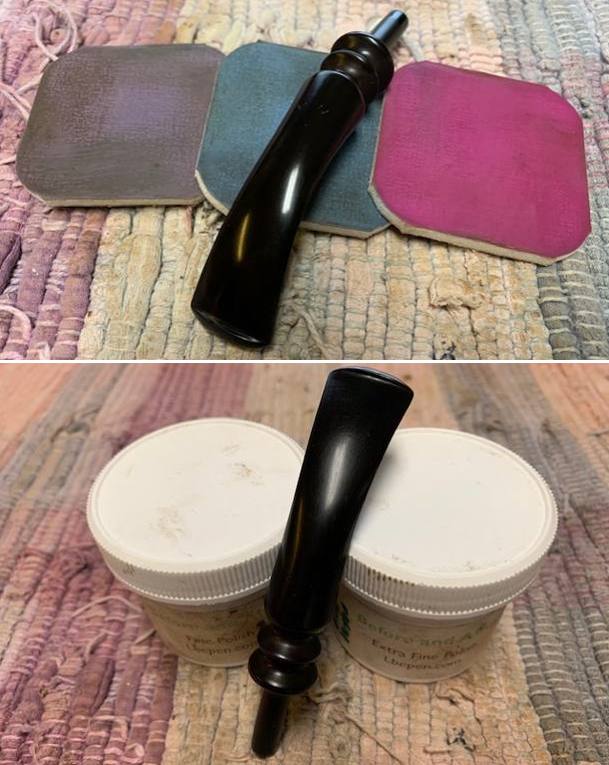 This Ben Wade Danish Hand Model 100 Freehand with a fancy, turned vulcanite stem is a great looking pipe now that it has been restored. I put the stem back on the bowl and carefully buffed the pipe with Blue Diamond on the buffing wheel using a light touch on the briar. I gave the bowl and the stem multiple coats of carnauba wax on the buffing wheel and followed that by buffing the entire pipe with a clean buffing pad. I hand buffed the pipe with a microfiber cloth to deepen the shine. The finished Ben Wade 100 Freehand fits nicely in the hand though it is quite large and feels great. Give the finished pipe a look in the photos below. The dimensions of the pipe are Length: 6 inches, Height: 2 ½ inches, Outside diameter of the bowl: 1 ½ inches, Chamber diameter: 1 inch. The weight of the pipe is 2.29 ounces/65 grams. I will be adding this pipe to the rebornpipes store shortly in the Danish Pipe Makers section. If you are interested in adding this pipe to your collection send me a message or an email. Thanks for reading this blog and my reflections on the pipe while I worked on it. There are many more to come!
This Ben Wade Danish Hand Model 100 Freehand with a fancy, turned vulcanite stem is a great looking pipe now that it has been restored. I put the stem back on the bowl and carefully buffed the pipe with Blue Diamond on the buffing wheel using a light touch on the briar. I gave the bowl and the stem multiple coats of carnauba wax on the buffing wheel and followed that by buffing the entire pipe with a clean buffing pad. I hand buffed the pipe with a microfiber cloth to deepen the shine. The finished Ben Wade 100 Freehand fits nicely in the hand though it is quite large and feels great. Give the finished pipe a look in the photos below. The dimensions of the pipe are Length: 6 inches, Height: 2 ½ inches, Outside diameter of the bowl: 1 ½ inches, Chamber diameter: 1 inch. The weight of the pipe is 2.29 ounces/65 grams. I will be adding this pipe to the rebornpipes store shortly in the Danish Pipe Makers section. If you are interested in adding this pipe to your collection send me a message or an email. Thanks for reading this blog and my reflections on the pipe while I worked on it. There are many more to come!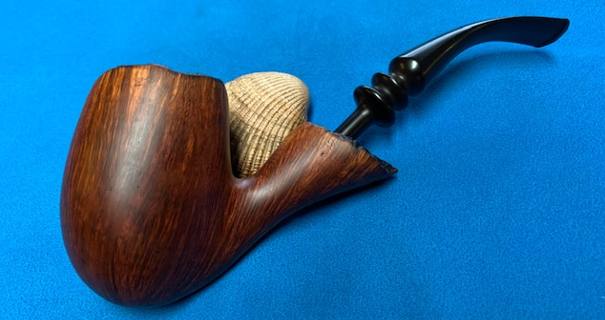
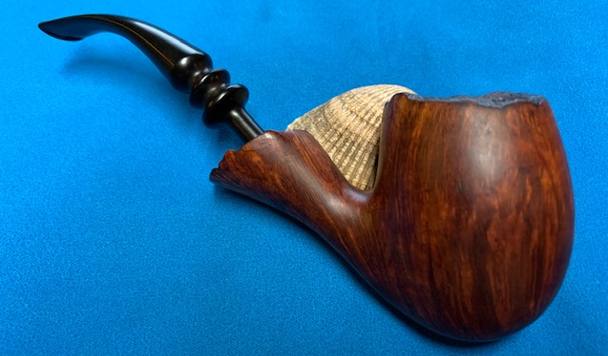
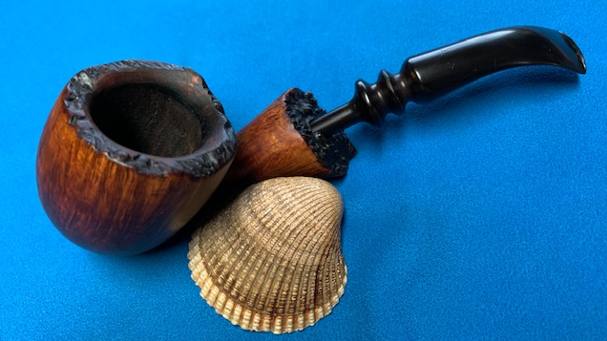
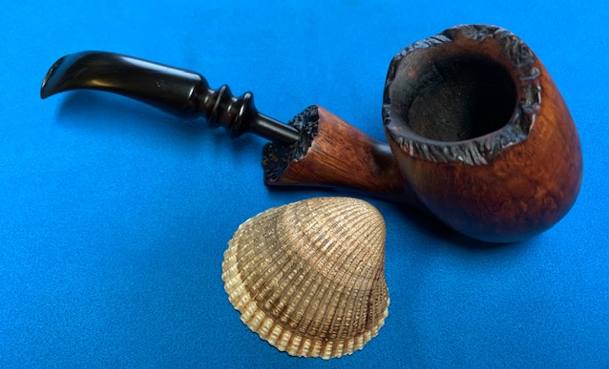
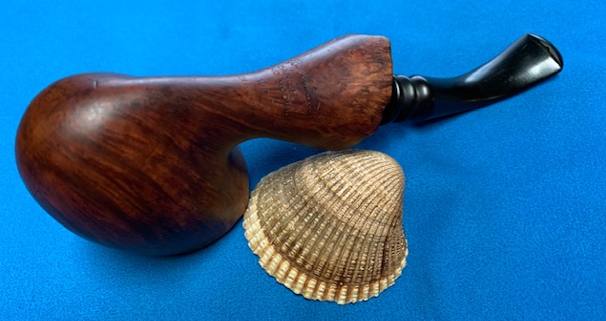
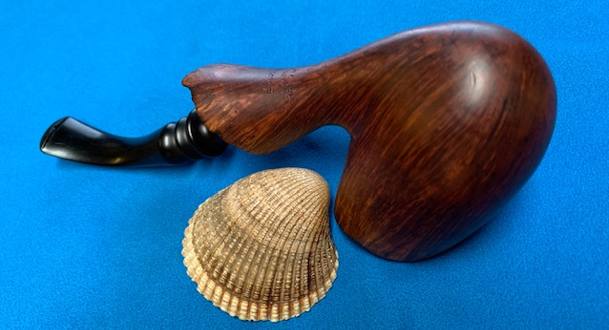
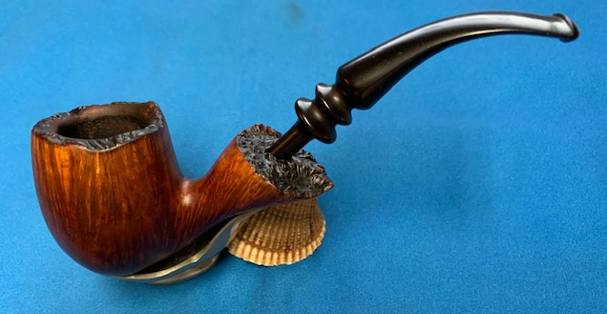
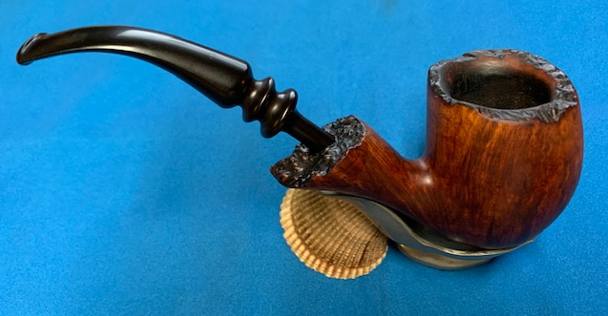
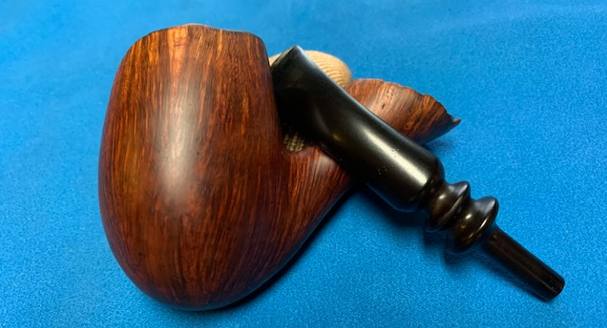
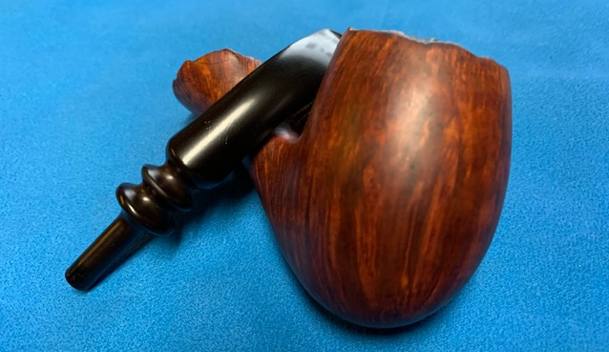
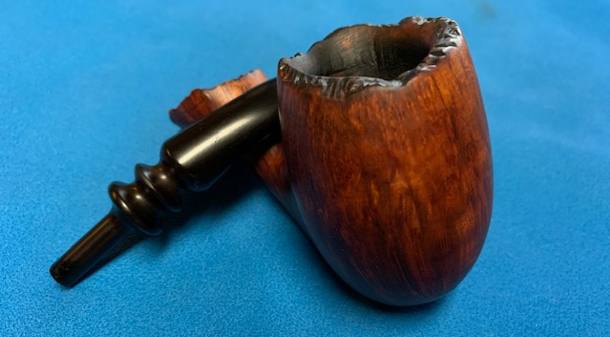
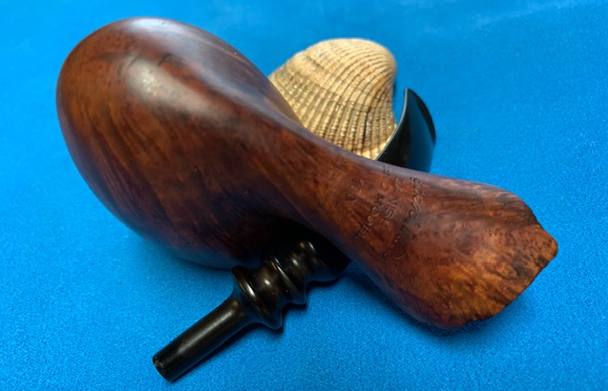
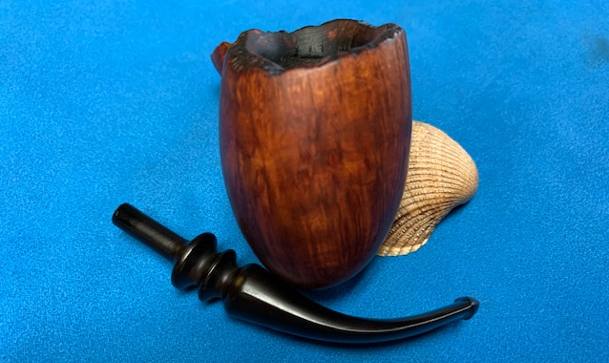
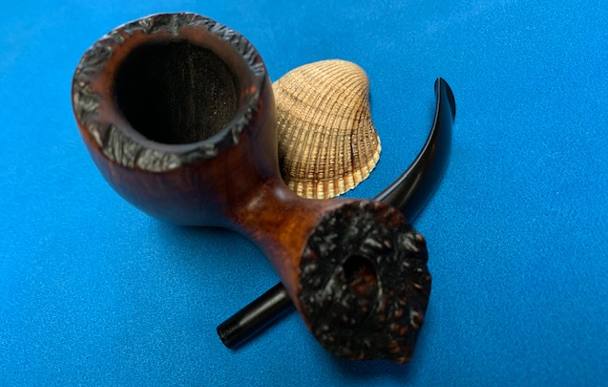
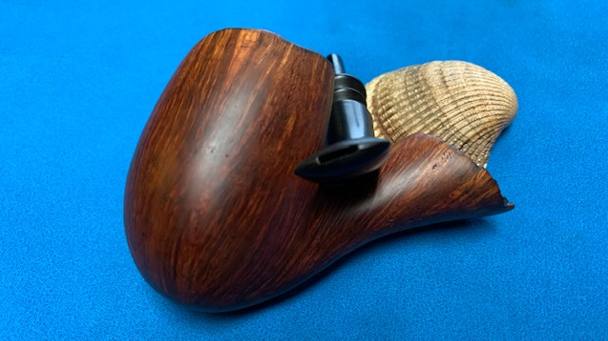
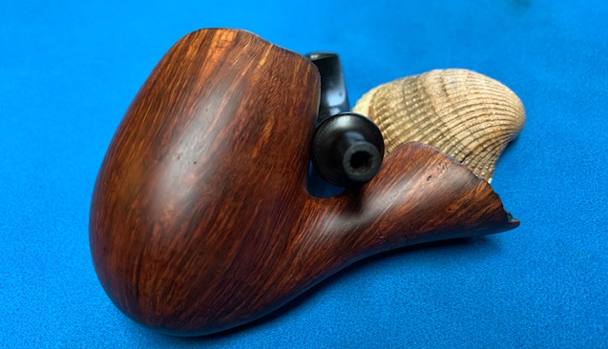 rac
rac

